Volcanoes are erupting in The Philippines, but on-fire Australia received some welcome rain. The Iran war cries have been called off and The Donald’s military powers are about to be hamstrung by the Senate. Meanwhile, his impeachment trial is starting, and we’re all on Twitter for a front-row seat.
What Could Go Right? Baby knowledge boom
Could we save the lives of 1,000 mothers and babies each day by 2030?
This is our weekly newsletter, What Could Go Right? Sign up here to receive it in your inbox every Thursday at 5am ET. You can read past issues here.
Baby knowledge boom
One unsung song the general public is often unaware of is how far the world has come in saving the lives of children.
This graph from the incomparable data website Our World in Data, which shows how common it used to be for one of every two children to die before they reached the age of 15, is a perennial favorite in progress circles.
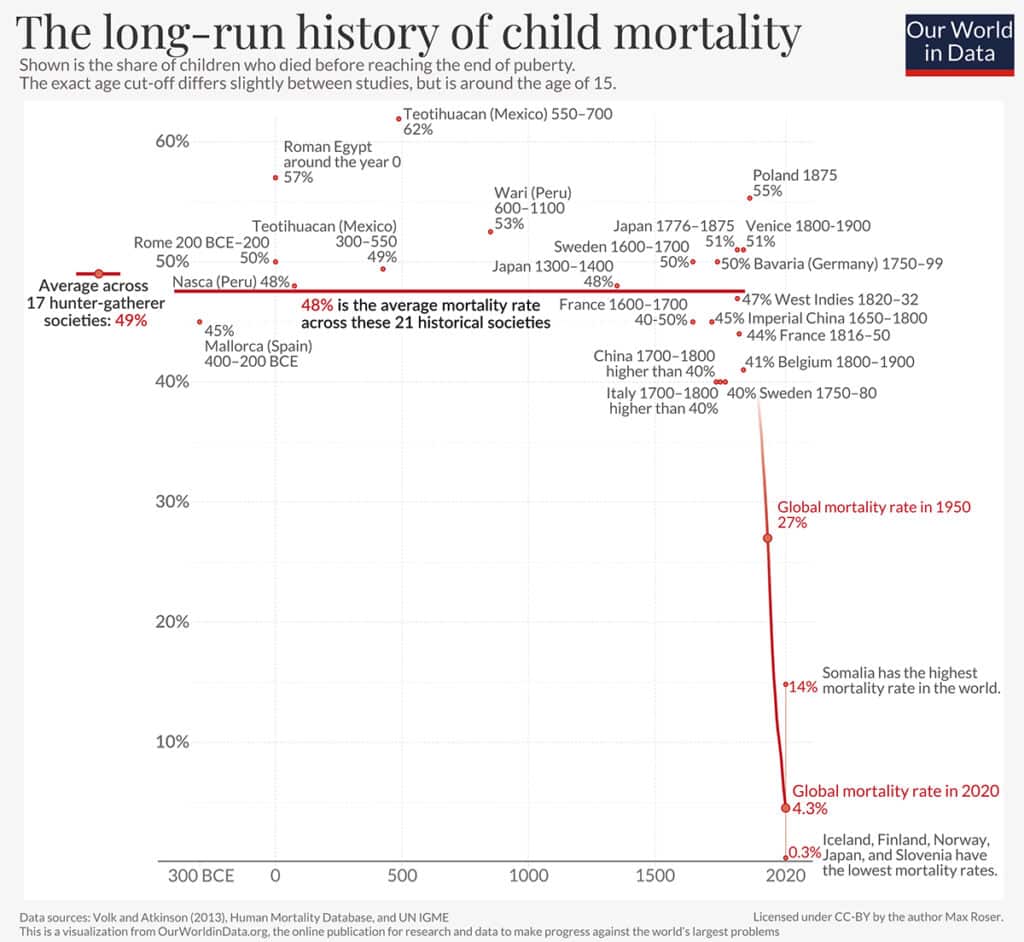
Even in 1950, when child mortality rates had already been cut in half, we were living in a vastly different world than today’s. Things have improved everywhere—literally. Every country has lowered their rates, even low-income ones like in sub-Saharan Africa, where most child deaths occur. Average child mortality rates in Africa nowadays are better than European ones were in 1950.
Still, the current child mortality rate of 4.3 percent means that around six million children die per year, many from preventable causes, says Our World in Data.
Longtime readers of this newsletter will know about the Sustainable Development Goals (SDGs), 17 goals set by the United Nations (UN) in 2015 to improve various facets of life on the planet by 2030. They range from clean water to education for all to ending poverty.
This week I would like to zoom in on two sub-targets—under-5 and neonatal mortality rates—of SDG #3, which is to “ensure healthy lives and promote well-being for all at all ages.” The under-5 rate means the number of children per 1,000 live births who die before their fifth birthday. Neonatal is the number who die within 28 days.
Heartbreaking stuff, I know, but they are two SDGs that are within shooting distance of their 2030 objectives. From the 2023 Bill & Melinda Gates Foundation report on the SDGs:
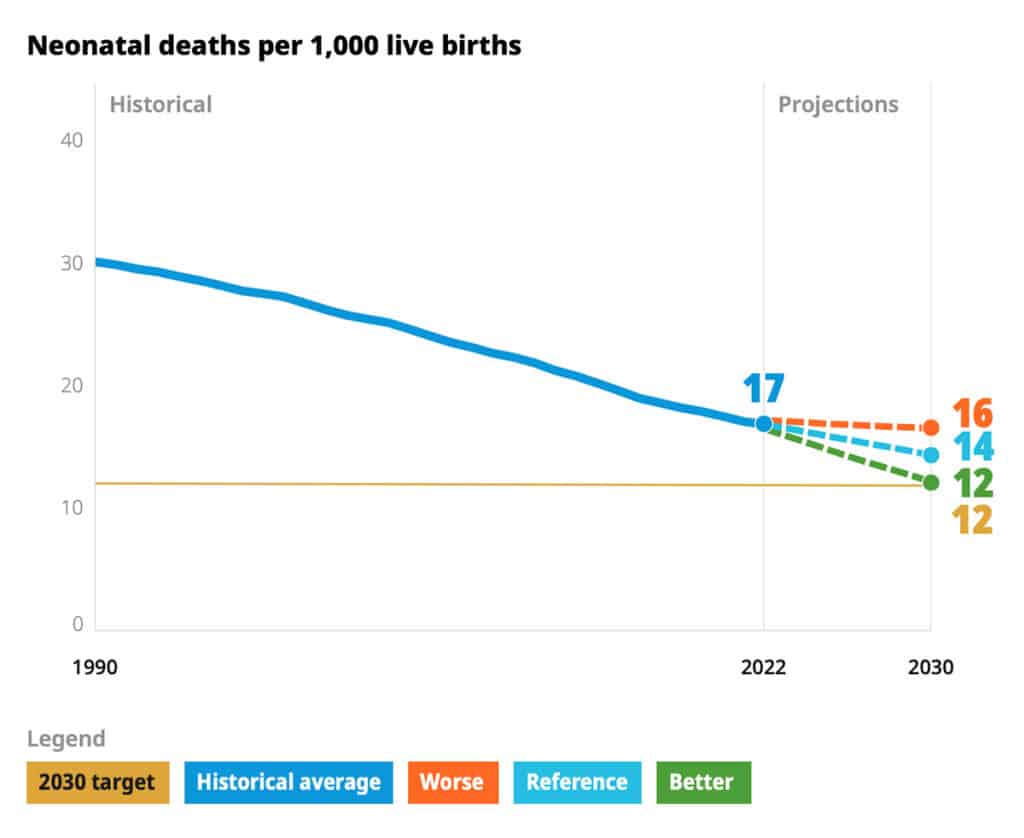
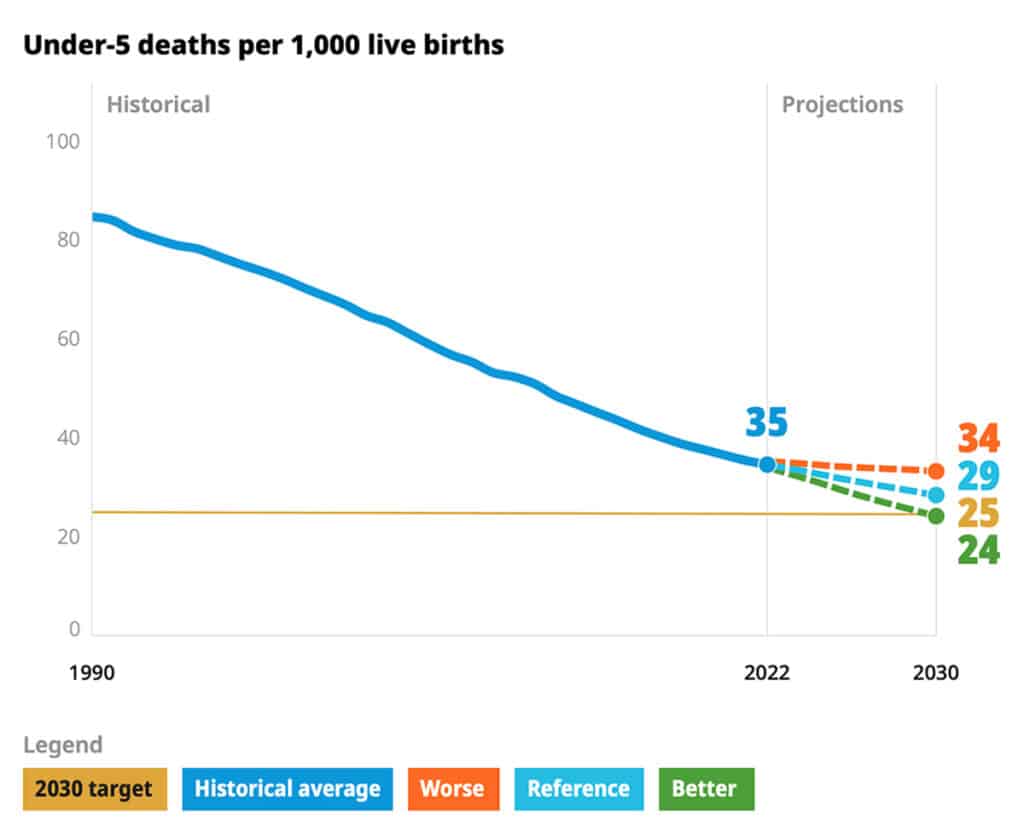
The light blue lines are where the Foundation anticipates we’ll arrive if the current rate of progress stays the same from now until 2030. The gold line is the target, so 25 child deaths and 12 neonatal ones per 1,000 live births.
Note that these graphs represent averages, however, and that SDG 3 includes all countries hitting the target numbers. The two worst-off countries, per UNICEF‘s 2021 data, are South Sudan and Pakistan. They have neonatal mortality rates at nearly 40, and there are many others in the 20s and 30s. (For comparison, world leader Singapore’s is .7; the United States’, 3.3.) Niger’s under-5 mortality rate is 115.2, versus world leader San Marino’s 1.7. (The US’ is 6.2.)
Despite the many challenges, what is striking is the possibility that progress could accelerate. As Bill Gates writes in the Foundation’s report, the last ten years have seen a “baby knowledge boom.” We know much better now than even ten years ago what babies in low- and middle-income countries are dying from and how to successfully intervene. These new interventions include:
- Antenatal corticosteroids, which “fast-forward” the maturation of a premature baby’s lungs, accomplishing in days what would naturally take weeks
- Probiotic supplements for babies born too early or too small, which improves their ability to absorb nutrients from breast milk, giving them a “healthy gut”
- Probiotic supplements for malnourished pregnant women, so that the mother’s “healthy gut” is transferred to the baby in her womb. This is a big change, as the “medical field used to think that you couldn’t treat malnutrition until a child was about six months old and started eating,” the report explains.
The Foundation estimates that these, combined with new advancements around maternal health, could save two million lives by 2030, or 1,000 mothers and babies each day, if they are successfully scaled.
We don’t know if that will happen, of course. And even if we meet the 2030 targets, that still leaves low- and middle-income countries at child mortality rates that greatly lag the ones in high-income countries. To bring child deaths down to absolute zero is likely impossible. But to keep pushing so that each country has numbers like Singapore’s or San Marino’s would be well worthwhile.
If you’re interested in digging more into the data, Our World in Data’s page on child and infant mortality is newly updated and chock-full of information. Both that and the Gates Foundation report goes into the interlinked issue of maternal mortality, which I did not highlight here as the numbers are less encouraging. I was also hesitant to do so, in light of the widely dispersed news that the US’ maternal mortality rates are worsening, given questions around the data.
In 2022, the US’ infant mortality rates rose as well (including neonatal, from 5.44 in 2021 to 5.60), but the data is provisional, and it’s uncertain how much impact the pandemic had.
If you would like more information about either topic, though, you know where to find me: hello@theprogressnetwork.org, or comment below.
Quick hits
- As of next year, Meta, the parent company of Facebook and Instagram, will require advertisers to disclose when a political or social issue ad has been digitally altered, including using AI. Their process of discerning when that is the case leaves much to be desired, but . . . it’s better than nothing?
- A Carbon Brief analysis has found that China’s CO2 emissions are set to fall in 2024, possibly for good.
- South Africa is the first African country to decide that both mothers and fathers are entitled to parental leave. It will be up to parents how to divide the four months they are given in total.
Below in the links section, deforestation falls again, digital twins for personal health, legal weed for most Americans, and more.
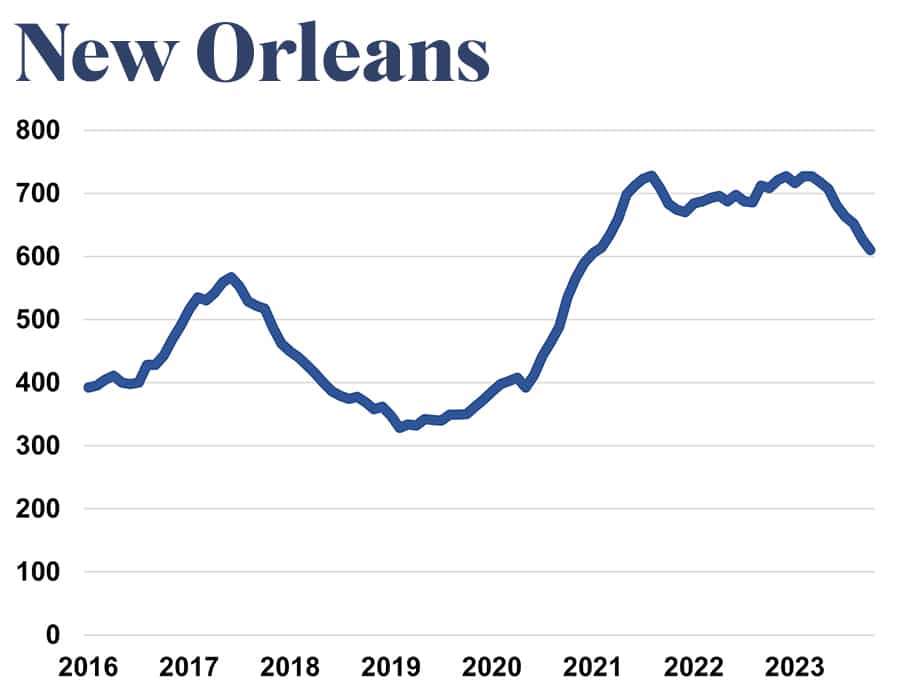

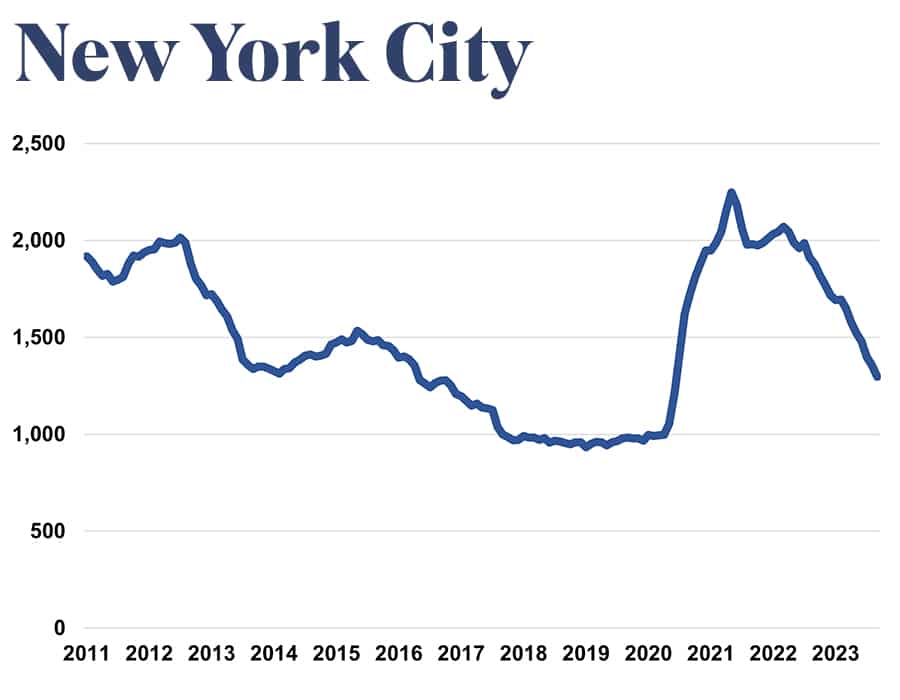
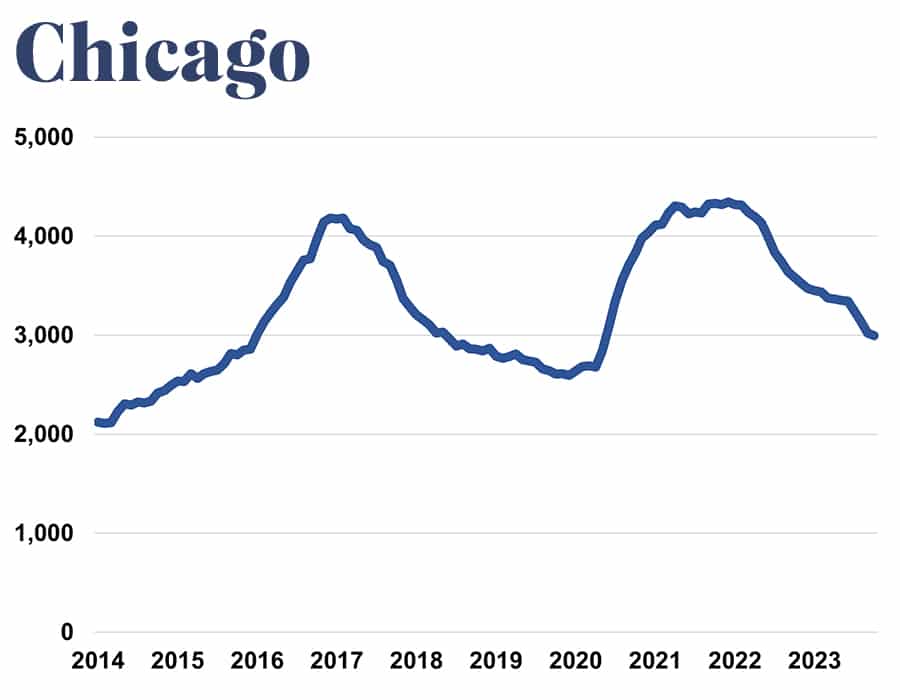
What Could Go Right? S5 E7

What are the dangers of not acknowledging what has gotten better? How do we understand the marks history leaves on individuals? And what does a former president of Harvard think of higher education in the US today? We hear from historian, civil rights activist, and the first woman president of Harvard, Drew Gilpin Faust, about how her story and how activism can actually make a difference. | Listen to the episode
Progress, Please
(Found good news? Tweet at us @progressntwrk or email.)
Other good stuff in the news
Energy & Environment:
- On the 50th anniversary of the Endangered Species Act, Channel Islands plant species declared fully recovered | US Fish & Wildlife Service
- Deforestation in Brazilian Amazon down 22% in a year | Phys.org
- Indonesia floats Southeast Asia’s biggest solar plant for 50,000 homes | Interesting Engineering
Public Health:
- ‘Tremendous’ strides toward disease elimination in developing nations | UN News
- Kenya manufacturer is first in Africa to get WHO approval for malaria drug | The Guardian
- London’s Low Emission Zones improve air quality, health, and people’s well-being, says new analysis | Medical Xpress
- FDA approves first vaccine against chikungunya virus | CNN
- Surgical team performs world’s first whole-eye and partial-face transplant | NYU Langone Health
Science & Tech:
- Impressive new plastic self-heals, can be recycled and feeds marine life | New Atlas
- For the first time, gene-editing provides hints for lowering cholesterol | NPR
- How digital twins may enable personalized health treatment | The Guardian
- Blood tests for Alzheimer’s may be rolled out within five years | New Scientist
Politics & Policy:
- Why Michigan’s clean energy bill is a really big deal | Inside Climate News
- Over 60 countries back deal to triple renewable energy this decade | Reuters
- Marijuana legal for more than half of Americans after election win | Axios
- Minnesotans will soon be able to disarm dangerous people. Will it save lives? | The Trace
TPN Member originals
(Who are our Members? Get to know them.)
Israel-Palestine:
- Israel is in real danger for three reasons | Thomas L. Friedman
- The ‘river to the sea’ Rorschach test | Robert Wright
The Rest:
- My grand theory of the left | Matthew Yglesias
- Trump polling ahead of Biden in swing states | Isaac Saul
- Cancel culture cuts both ways | Yascha Mounk
- My long-read Q&A with Marc Andreessen on the importance of techno-optimism | James Pethokoukis
- Sleep more and be happier | Arthur C. Brooks
- We need more apprenticeships | Richard V. Reeves
- Hypermasculinity, misogyny, homophobia: The toxic triad of authoritarian gender politics | Ruth Ben-Ghiat
- How black Americans kept Reconstruction alive | Peniel E. Joseph
Department of Ideas
(A staff recommendation guaranteed to give your brain some food for thought.)
Deep Heat | Works in Progress
Why we picked it: This is the 13th issue of the online magazine Works in Progress. As always, it’s eclectic and fascinating, covering everything from the “cocktail renaissance” to how war resulted in good governance in Europe. —Emma Varvaloucas
Until Next Time
Is the key to anything ever not balance? 






